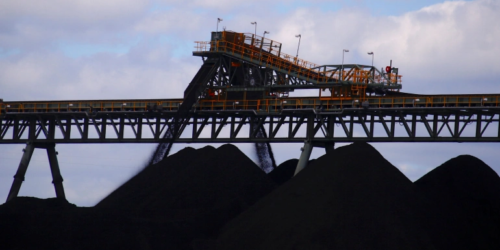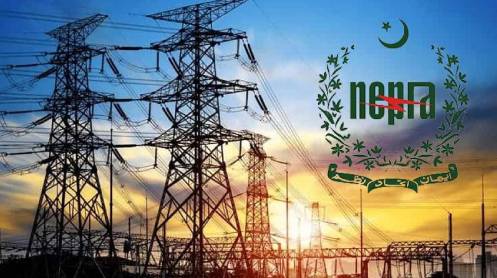Such a prospect would have seemed impossible only a few weeks ago. Before war broke out, European nations were rolling out increasingly ambitious plans to phase out the carbon-intensive fuel even as gas prices rose, power plants were going offline and some countries were exiting coal completely.
But Russia’s brutal attack on Ukraine has upended European energy markets, exposing the continent’s dependence on Russian fossil fuels and prompting a scramble for alternatives. Coal is one of the few short-term options available to parts of Europe, including its biggest economy, Germany.
Two coal plants, one in the United Kingdom and another in Germany, have already delayed retirement plans, and more are expected to follow, said Glenn Rickson, head of European power analysis at S&P Global.
“Really we see the upside to coal generation relative to pre-Ukraine invasion expectations coming from this summer onwards, as gas now looks out of the money for the next couple of years,” Rickson said.
He predicted European coal generation will average 15 gigawatts in 2022, up from 11GW in 2021 and 8 GW in 2020. Germany’s coal fleet, which has largely operated as a backup source of power in recent years, is now likely to run more frequently.
Coal’s revival may be short-lived. In a press conference this week, E.U. climate chief Frans Timmermans acknowledged that some coal plants might need to stay online longer than anticipated to address the continent’s energy crunch.
But Timmermans pointed out that E.U. nations are also legally bound by a climate law targeting a 55 percent reduction in emissions by 2030 over 1990 levels, even if they are free to choose how to generate that electricity.
“We don’t say no to all fossil fuels immediately,” he said. “If it’s combined with faster investment in renewable energy — for climate and for our energy self-sufficiency — that could be two wins.”
The increase in coal generation marks a rapid reversal for Europe. Coal consumption in the region fell by almost 40 percent between 2010 and 2020, according to BP PLC. Germany, the continent’s largest coal burner, announced last year that it was accelerating its phaseout from 2038 to 2030. The United Kingdom has committed to turning off its coal facilities by 2024.
But that trend began to shift last year amid a rapid increase in natural gas prices and rising electricity demand. European coal generation increased 18 percent amid a decline in gas, hydropower and wind, according to research from Rystad Energy. In mid-February, the group estimated that if a military conflict materialized between Russia and Ukraine, coal generation could jump by an additional 11 percent this year.
“Coal burn in Europe has remained at high levels since last year due to high gas prices, and it is likely to continue the trend this year, too, with gas prices surging further,” said Yan Qin, an analyst at Refinitiv.
But the European Union is limited in how much it can increase coal output because many member states have coal phaseout plans, or other policies that drawn down the fuel.
In a plan released last week, the International Energy Agency estimated that an additional 120 terrawatt-hours of coal-fired power could cut gas demand by 22 billion cubic meters this year, reducing the need for Russian imports — though it would need to be temporary and limited to avoid increasing overall emissions.
That would require an additional 50 million tons of coal at a time when producers are already looking for alternative suppliers to replace the 50 million tons of Russian coal they import annually, according to Brian Ricketts, secretary-general of the European Association for Coal and Lignite, an industry group representing E.U. coal producers, importers and consumers.
“Unfortunately, coal industry investment has not kept up with what’s needed to replace depleted mines,” Ricketts said in an email. “Policies and the ESG framework has led to multinationals exiting the thermal coal business. These are good days for those that remain, but they will struggle to ramp up production.”
More coal, more carbon
The continent’s coal rebound, even if short-lived, could represent a setback for global climate efforts.
In recent years, falling coal consumption in Europe and the United States has helped offset rising emissions in Asia, where coal use continues to increase. Yet rising coal generation in both regions — the result of an economic bounce-back from Covid-19 pandemic lockdowns — helped prod global carbon dioxide emissions to record highs last year.
The International Energy Agency reported this week that global CO2 levels increased 6 percent last year to 36.6 gigatons. European emissions from coal increased 16 percent, while U.S. emissions were up 17 percent.
Many greens acknowledged that a short-term increase in coal generation will likely be needed to help Europe address the current crisis, but they expressed optimism that it will accelerate the continent’s shift to renewables.
Sarah Brown, a senior energy and climate analyst at Ember, said she has been encouraged by comments from European leaders, who have committed to speeding up the energy transition even as they acknowledged a short-term need for coal. Many once contemplated using gas as a bridge fuel; now it appears possible to move from coal directly to renewables.
“All these barriers that were there may suddenly be removed,” Brown said. “There are solutions to fixing that gas demand without replacing it with more gas.”
Lauri Myllyvirta, lead analyst at the Centre on Energy and Clean Air, said the war has disrupted Europe’s quiet acceptance of its reliance on Russian natural gas.
“The clear medium- and long-term response is accelerated build out of clean energy sources and replacement of gas with electricity in buildings,” he wrote in an email. “In that way, the crisis is speeding up the timelines for phasing out fossil power generation.”
‘Super-expensive LNG’
One of the bigger questions is how Europe’s energy crisis will ripple around the globe.
American coal producers are eyeing European markets. When Biden banned Russian coal imports earlier this week, Rich Nolan, CEO of the National Mining Association, released a statement saying U.S. coal miners should “play a critical role in helping meet Europe’s energy and steelmaking needs in the months and years ahead.” The NMA represents large U.S. miners, including coal companies.
The U.S. Energy Information Administration, a government energy forecasting office, earlier this week estimated that U.S. coal exports will increase on an annual basis for at least the next two years, citing the war’s impacts on the broader energy sector.
U.S. coal companies will “stand to benefit” as Russian coal exports to Europe decline, said Ben Nelson, senior vice president and global group credit officer for environmental, social and governance at Moody’s Investors Service.
Much of the European Union’s short-term strategy, meanwhile, hinges on the immediate need to secure gas supplies from outside Russia. But energy analysts say that could have ripple effects by shifting cargoes of liquefied natural gas away from developing countries that have come to rely on LNG. That includes coal-dependent nations such as Indonesia, Pakistan and the Philippines.
“In most of these places, you have an electricity system where coal is very big and, to the extent possible, coal would replace natural gas,” said Pierre Noël, a global research scholar at Columbia University’s Center on Global Energy Policy.
The effects of the war and price spikes could also have longer-term reverberations if they upend the belief that the clean energy transition is moving forward.
“You’re talking about something that was starting to take shape in the past 10 years, the dash for coal was coming to an end, the price of LNG was much more moderate than it was in the past, and now suddenly they are switching back to an environment of super-expensive LNG,” said Noël.
An analysis by the Rhodium Group found that countries with the most imported LNG — Japan, South Korea, China and India — could free up supplies for Europe by burning more coal and oil. If done temporarily, that would amount to less than 0.1 percent of global emissions, the study found.
The crisis has also led to a spike in coal prices, putting pressure on countries that produce it domestically to ramp up output.
“If international gas prices stay up, then a lot fewer people can afford to use it. And so what’s the cheapest alternative? Coal,” said Edward Chow, a senior fellow at the Center for Strategic and International Studies.





